Around the world, there are more than 200 identified species of owls. They have various special characteristics that help them hunt prey at night, including highly developed binocular vision and precision flying ability. They are even more enigmatic as we never see them because of their camouflage and nocturnal behavior. You’re lucky if you live in Texas because the Lone Star State is home to different types of owls. Some of them are a common sight, while others are migratory and rarely appear.
Texas’s enormous size is undoubtedly one reason there’s a wide variety of owl species that live there. Texas has several climate zones, which means there are vast differences in seasonal temperatures and rainfall. These variations also allow for a diversity of habitats that may house a diverse range of owl species. This article will list the types of owls you can see in Texas.
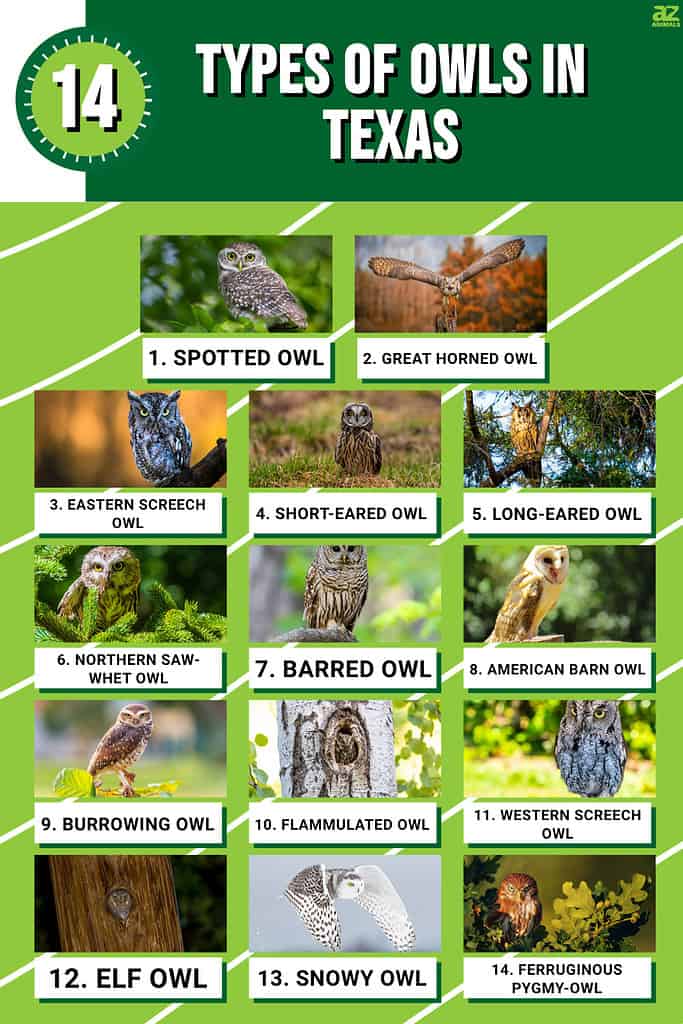
14 Types of Owls in Texas
1. Spotted Owl
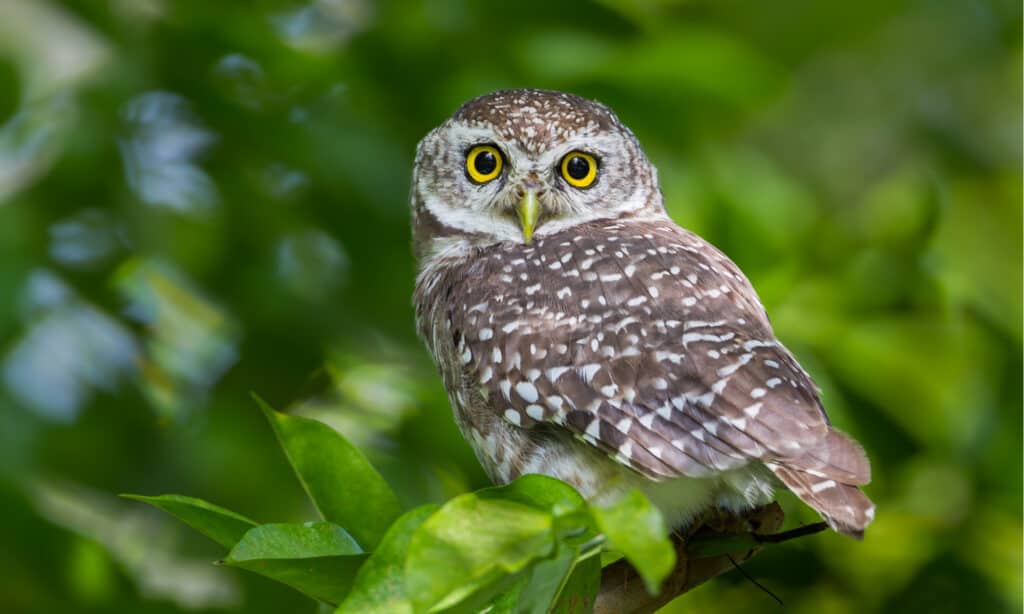
Only mature woodlands in Texas are home to spotted owls.
©kajornyot wildlife photography/Shutterstock.com
Spotted owls are exclusively seen in the western forested areas of Texas, and they are getting harder to find. Unfortunately, habitat loss and competition with barred owls contribute to the continued reduction of spotted owl populations. Only mature woodlands in Texas are home to spotted owls. These owls are reported to consume small reptiles, bats, and even small birds (including woodpeckers), in addition to small rodents like voles, mice, and squirrels. These owls grow to about 1.5 feet with a wingspan of 4 feet.
2. Great Horned Owl
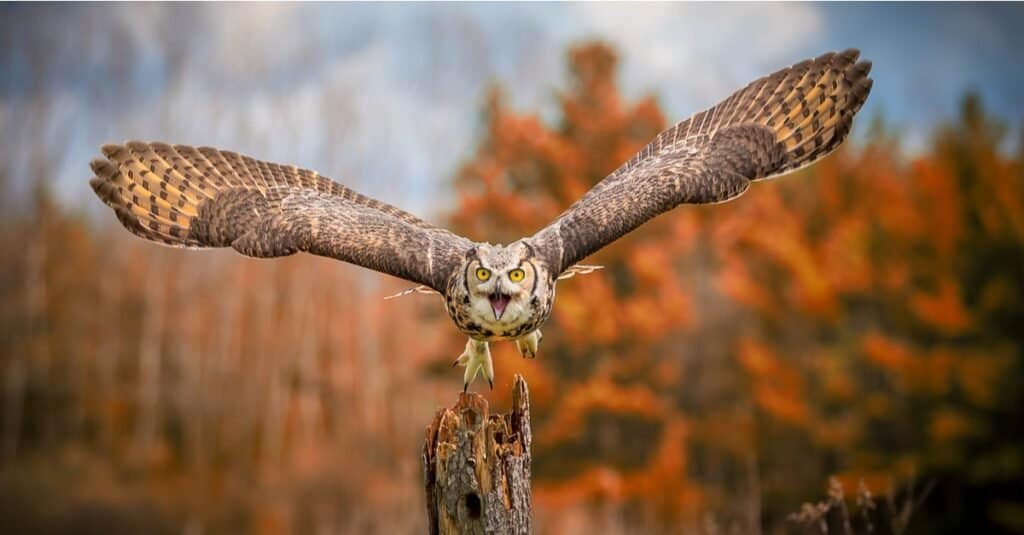
The wingspan of a great horned owl is approximately 4.6 feet long.
©Imran Ashraf/Shutterstock.com
Once you learn to recognize the great horned owl, you won’t likely forget it. It’s a stunning bird that typically reaches heights of over 2 feet and weighs over 3.6 pounds (in females). The wingspan of a great horned owl is approximately 4.6 feet long and this owl species is the biggest in Texas and lives there yearly. It is also the second-heaviest owl in North America and the heaviest in Central and South America. Its habitat is essentially limitless as long as trees and rocky nesting areas are available. A great horned owl is also among the most adaptable bird there is.
3. Eastern Screech Owl
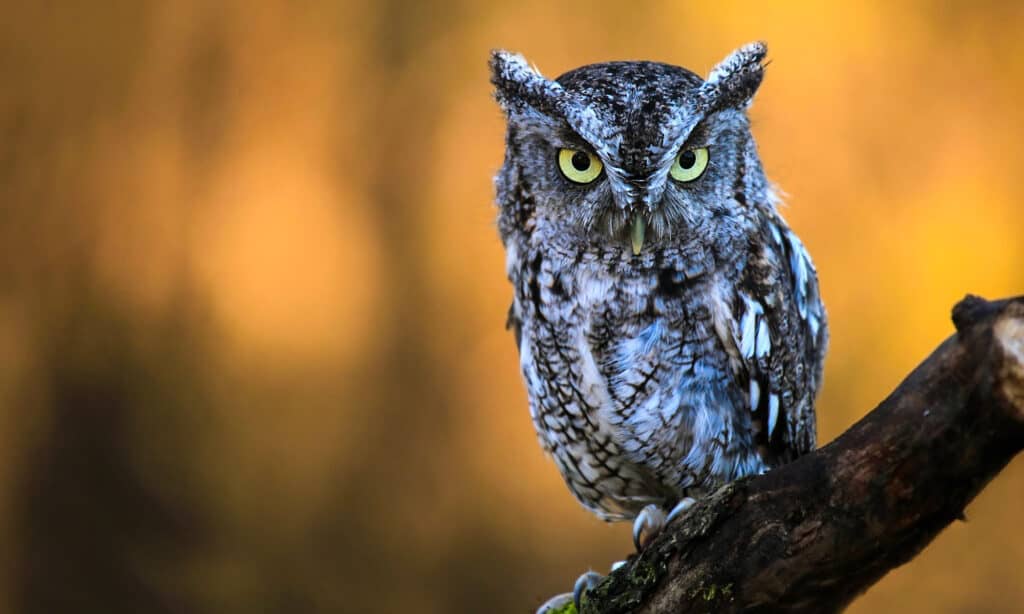
In Texas, the eastern screech owl will settle in practically any forested environment.
©mlorenz/Shutterstock.com
The eastern screech owl, which has a similar diminutive height to its western counterpart, is widespread throughout much of the eastern portion of the United States. Except for Texas’s far western borders, this encompasses all of central, southern, and eastern Texas. The screech-owls’ low stature and lack of a neck may make you think of professional wrestlers. About one-third of these owls are red but can also be gray. In Texas, these little owls will settle in practically any forested environment. Screech owls stay away from locations where larger owls live, especially the great horned owl.
4. Short-Eared Owl

The short-eared owl is an opportunist that will consume voles, shrews, mice, rats, and even smaller birds.
©iStock.com/Harry Collins
Only during the winter can short-eared owls descend into Texas, spending most of the summer in Canada and the northern United States. They are scattered throughout the state but more frequent in northern Texas or the Gulf of Mexico. A round head, short neck, sandy belly, and a light or dark brown back are characteristics of the short-eared owl. The owls’ favorite habitats are grasslands, meadows, and sizable, unaltered woodland areas. The short-eared owl is an opportunist that will consume voles, shrews, mice, rats, and even smaller birds.
5. Long-Eared Owl
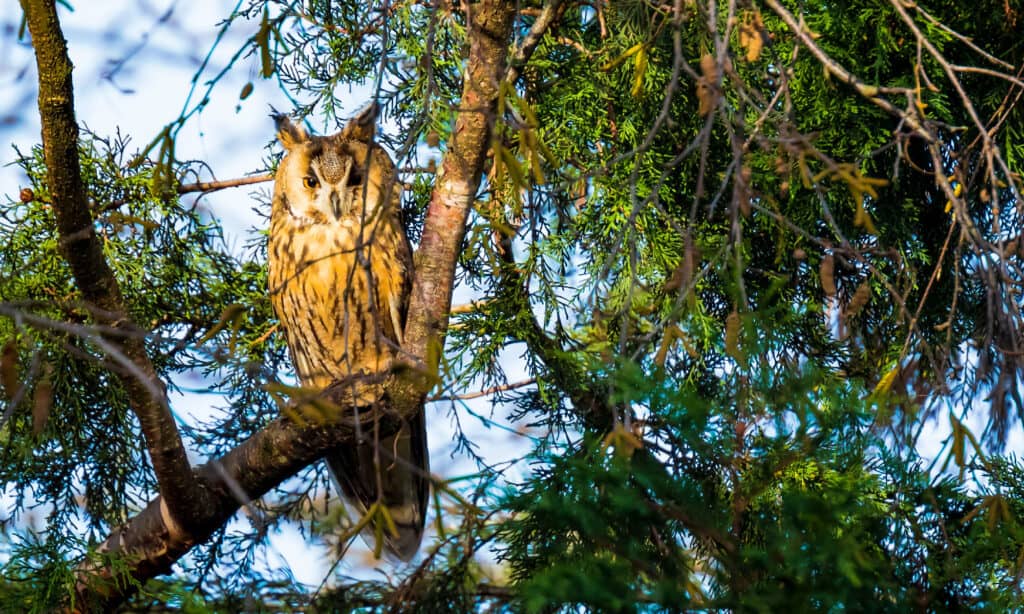
Long-eared owls are more likely to be spotted in western Texas in places like Amarillo and El Paso.
©SanderMeertinsPhotography/Shutterstock.com
During the winter, long-eared owls, which migrate, can be seen in some areas of Texas. They can cross through eastern Texas occasionally but are more likely to be spotted in western Texas in places like Amarillo and El Paso. The long feather tufts on its head, sometimes known as its “long ears,” make the long-eared owl most distinctive. The easiest technique to find long-eared owls is to listen because they can be quite difficult to spot. Their normal call is a low “hoo,” evenly spaced every few seconds, repeated ten to two hundred times.
6. Northern Saw-Whet Owl
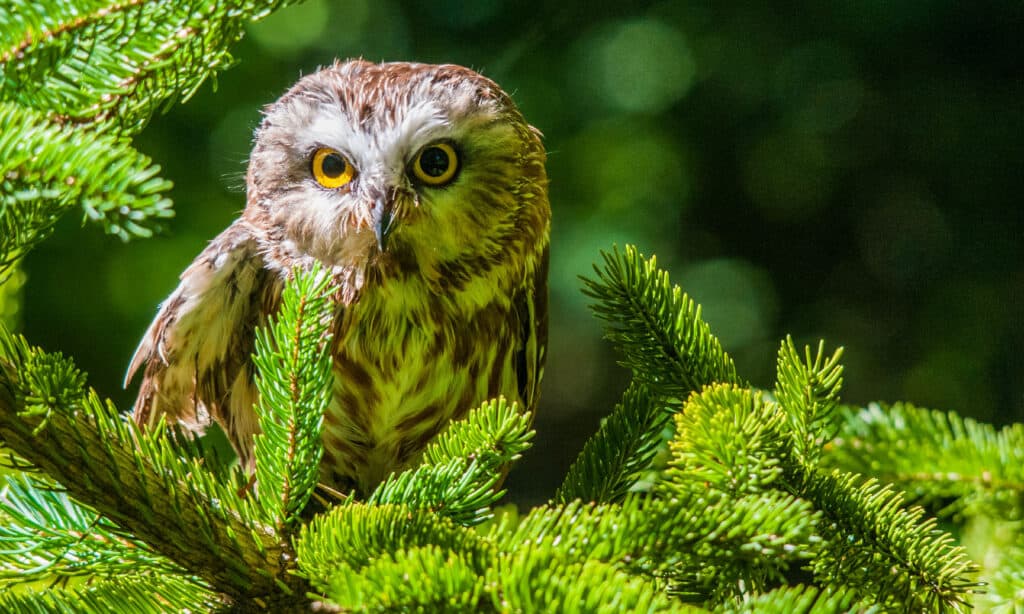
The saw-whet owl got its name from one of its most peculiar calls, a scraping noise that sounds like a saw being sharpened.
©iStock.com/bookguy
It is uncommon, but not impossible, to see a northern saw-whet owl in Texas. The saw-whet owl got its name from one of its most peculiar calls, a scraping noise that sounds like a saw being sharpened. There’s a strong possibility that the little owl you see in Texas is a northern saw-whet owl. This particular type of owl is among the tiniest ones on the planet. They rarely grow larger than 7-8 inches and have light brown faces and dark brown backs with white eyebrows. The forests and woodlands where these small creatures thrive the most are coniferous forests with lots of pine and fir.
7. Barred Owl

Barred owls are characterized by round, stocky bodies with short tails.
©FotoRequest/Shutterstock.com
The stunning barred owl, which has brown and white stripes, is primarily found in eastern Texas, yet its range also includes Austin and San Antonio. Most of the United States east of the Mississippi, much of Canada, and the Pacific Northwest are all home to barred owls. Their wings, back, and tail have light and dark brown horizontal stripes, hence the name “barred.” They are characterized by round, stocky bodies with short tails and have large, almond-shaped, dark brown eyes that are almost black and sleek on tuftless heads. Small mammals, fish, insects, tiny invertebrates, amphibians, and reptiles are among the foods consumed by barred owls.
8. American Barn Owl
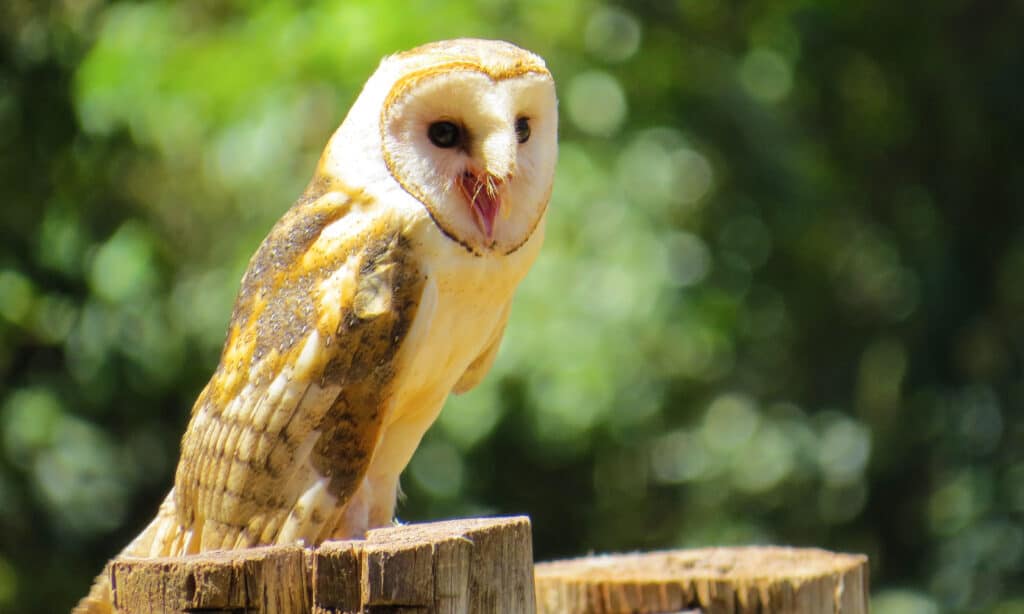
Barn owls are among the most common owl species.
©DEBORA DUARTE LISBOA/Shutterstock.com
In all seasons, Texas is home to barn owls. They are mostly found in open environments, including grasslands, fields, ranch and agricultural lands, and narrow swaths of forest. The face of a barn owl is shaped like a heart and is sandy in color with a dark brown border. Barn owls, one of the most common owl species, are often called common barn owls. These ominous creatures can be found worldwide, including Europe, Africa, Asia, North, Central, and South America. Barn owls are meat-dependent raptors that consume small birds, rabbits, reptiles, rodents, small foxes, fish, and amphibians.
9. Burrowing Owl
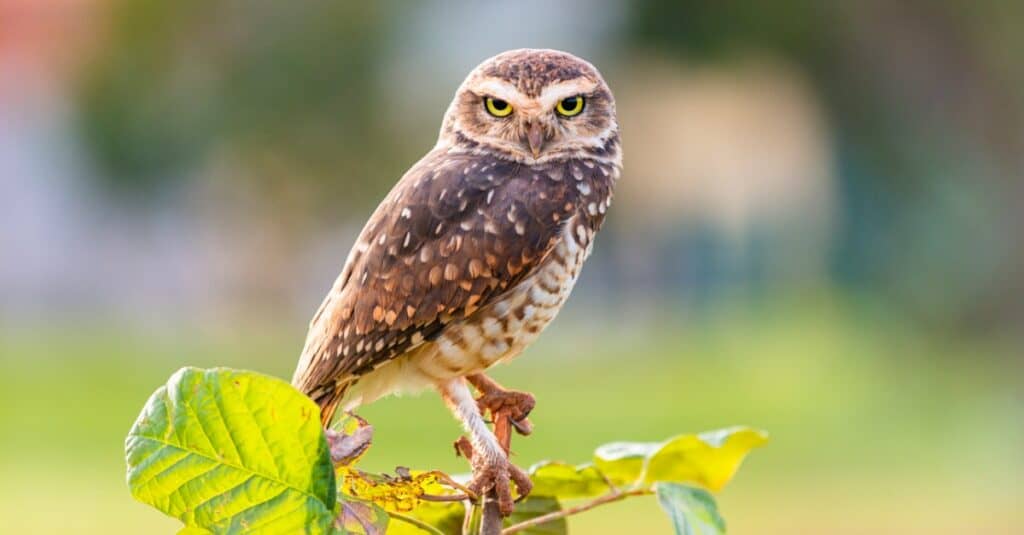
Burrowing owls can be found in meadows, fields, pastures, and other areas with holes and subterranean dens.
©iStock.com/Philou73
The majority of Texas is home to burrowing owls. They can be seen throughout most of western and central Texas, although they are much less frequent in the state’s extreme east. These owls can be found in meadows, fields, pastures, and other areas with holes and subterranean dens since they are active day and night. These cave dens offer a lot of room for gathering food. In case of food scarcity, they have been known to keep hundreds of mice in storage!
10. Flammulated Owl
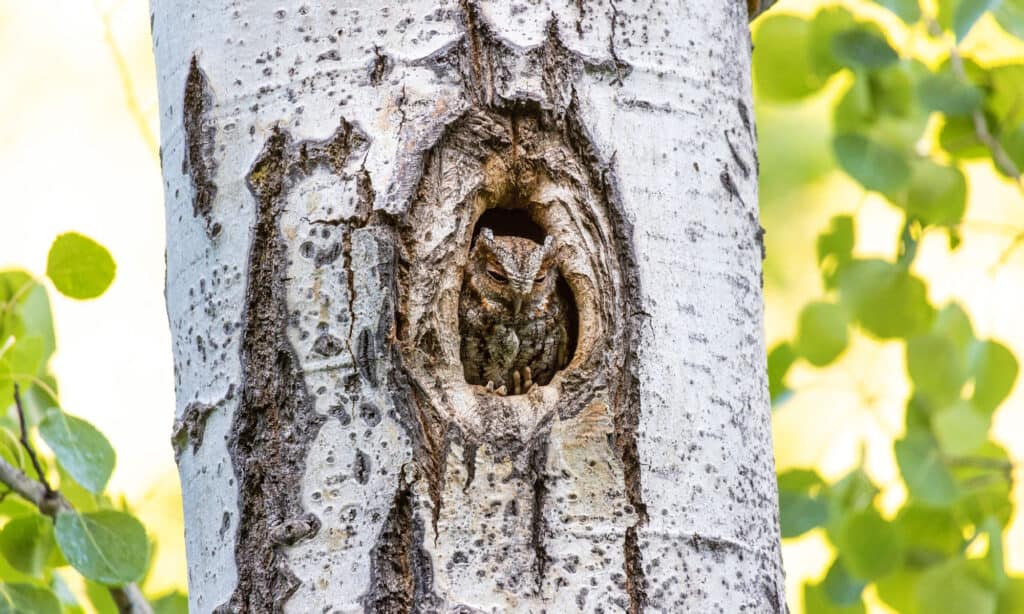
The appearance of the flammulated owl offers exceptional camouflage.
©iStock.com/Devonyu
A bird with flame-like markings is referred to as “flammulated.” How the flammulated owl got its name may be apparent if you look at it closely. Although Texas barely enters its far eastern range, these owls are primarily found in the western United States. While rare sightings have been reported in east and south Texas, they are more likely to be found in west Texas. In addition to being stunning, the flammulated appearance of this owl also offers exceptional camouflage, helping it in its role as a night hunter. It does, however, make sightings even more uncommon.
11. Western Screech Owl

Western screech owls have a very adorable, round, stocky appearance.
©Steve Bruckmann/Shutterstock.com
Western screech owls can be found in many western U.S. states and other western North America’s coast. Their territory borders Texas in the far western regions of the state, such as El Paso and the region around Big Bend National Park. Western screech owls have a very adorable, round, stocky appearance, much like their nearby relatives. They appear in brown, gray, or reddish colors, have little ear tufts, and large, expressive eyes. Rats, mice, and other birds make up their main diet.
12. Elf Owl
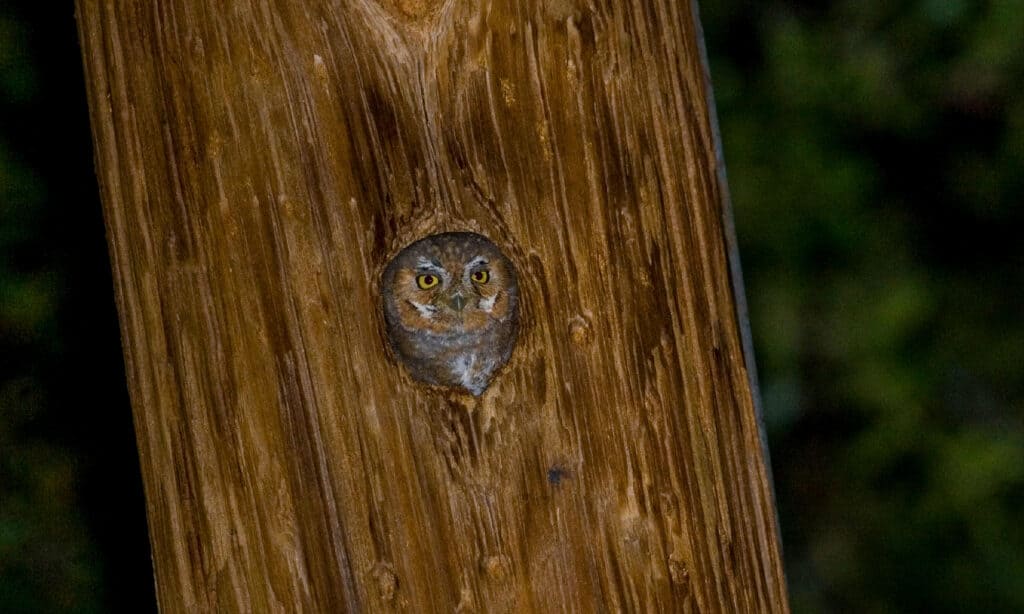
The smallest species of owl in the world is the elf owl.
©hstiver/Shutterstock.com
The elf owl is the tiniest North American owl, measuring only 6 inches, and is known for its small stature (hence the name). Its size is comparable to that of a common sparrow. So, they only appear in Texas during the summer around the border with Mexico. They migrate south into Mexico throughout the winter to maintain a sufficient food supply because their diet consists nearly entirely of insects, including moths, centipedes, and beetles. It’s interesting to note that they will also consume scorpions, although they make sure to remove the stinger first. Sadly, they are becoming harder to find in Texas because of habitat degradation.
13. Snowy Owl
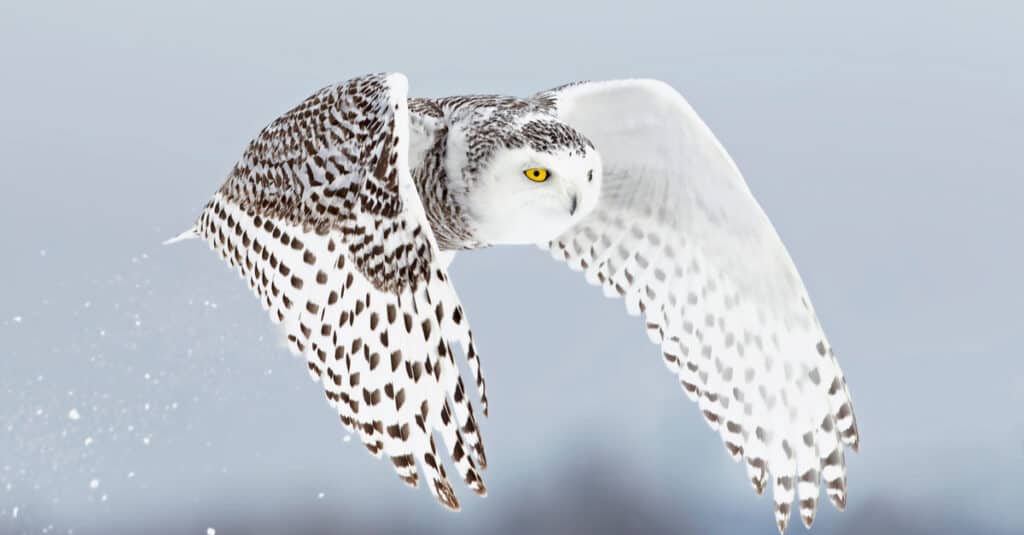
Snowy owls can fly as fast as 50 mph.
©Jim Cumming/Shutterstock.com
The snowy owl is an extremely rare bird in Texas and is a native of the Arctic tundra. However, they can occasionally appear in the North. Snowy owls can fly as fast as 50 mph and are known to hunt in various habitats, including the tundra, meadows, marshes, and fields. They may be found all over North America.
14. Ferruginous Pygmy-Owl
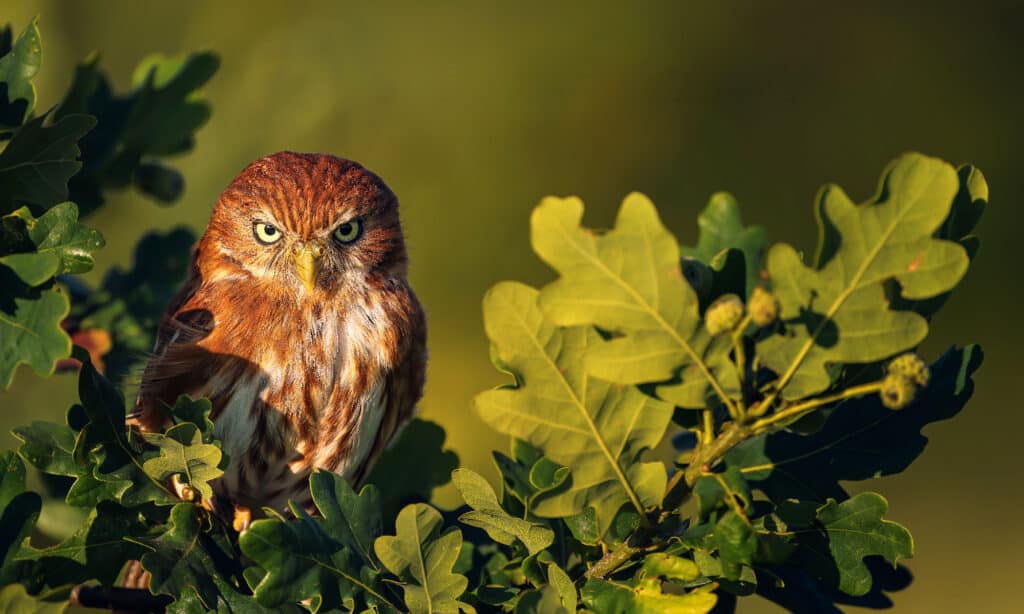
In Texas, ferruginous pygmy owls are frequently seen in semi-open forested settings, making hunting simpler.
©Jan Stria/Shutterstock.com
Although uncommon in the United States, this adorable small owl is prevalent in the tropics of Central and South America. Southern Texas and Arizona are the only states where it currently has territory. Ironically, the word “ferruginous” literally means “rust-colored,” but the coloration can range from gray-brown with a barred tail to a vivid rust hue with a uniform rust tail. In Texas, these owls likewise choose lowlands over higher altitudes and are frequently seen in semi-open forested settings, making hunting simpler.
Summary of the 14 Types of Owls in Texas
Here’s a recap of the 14 owl species in the state of Texas we’ve taken a close look at:
| Rank | Owl |
|---|---|
| 1 | Spotted Owl |
| 2 | Great Horned Owl |
| 3 | Eastern Screech-Owl |
| 4 | Short-Eared Owl |
| 5 | Long-Eared Owl |
| 6 | Northern Saw-Whet Owl |
| 7 | Barred Owl |
| 8 | American Barn Owl |
| 9 | Burrowing Owl |
| 10 | Flammulated Owl |
| 11 | Western Screech-Owl |
| 12 | Elf Owl |
| 13 | Snowy Owl |
| 14 | Ferruginous Pygmy-Owl |
The photo featured at the top of this post is © Jim Cumming/Shutterstock.com
Thank you for reading! Have some feedback for us? Contact the AZ Animals editorial team.







